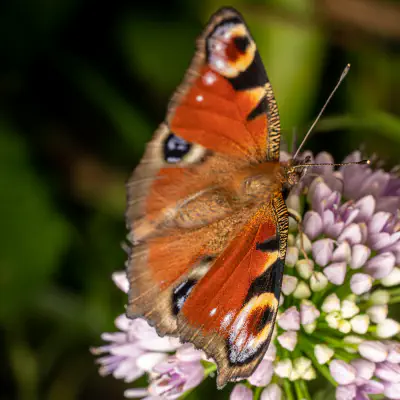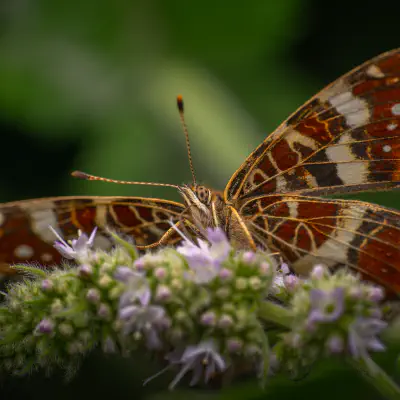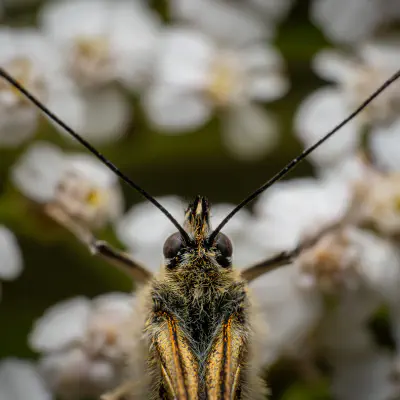Brush-footed Butterflies Lat. “Nymphalidae“
The Nymphalidae are the largest family of butterflies with about 6,000 species distributed throughout most of the world, belonging to the superfamily Papilionoidea. These are usually medium-sized to large butterflies. Most species have a reduced pair of forelegs and many hold their colourful wings flat when resting. They are also called brush-footed butterflies or four-footed butterflies, because they are known to stand on only four legs while the other two are curled up; in some species,…
Hierarchy
Nomenclature
Rafinesque introduced the name Nymphalia as a subfamily name in diurnal Lepidoptera. Rafinesque did not include Nymphalis among the listed genera, but Nymphalis was unequivocally implied in the formation of the name (Code Article 11.7.1.1). The attribution of the Nymphalidae to Rafinesque has now been widely adopted.
Morphology
In the adult butterflies, the first pair of legs is small or reduced, giving the family the other names of four-footed or brush-footed butterflies. The caterpillars are hairy or spiky with projections on the head, and the chrysalids have shiny spots. The trait for which these butterflies are most known is the use of only four legs; the reason their forelegs have become vestigial is not yet completely clear. Some suggest the forelegs are used to amplify the sense of smell, because some species possess a brush-like set of soft hair called setae, which has led researchers to believe the forelegs are used to improve signaling and communication between the species, while standing in the other four. This ability proves useful in terms of reproduction and the overall health of the species, and it is the leading theory so far. The forewings have the submedial vein (vein 1) unbranched and in one subfamily forked near the base; the medial vein has three branches, veins 2, 3, and 4; veins 5 and 6 arise from the points of junction of the discocellulars; the subcostal vein and its continuation beyond the apex of cell, vein 7, has never more than four branches, veins 8–11; 8 and 9 always arise from vein 7, 10, and 11 sometimes from vein 7 but more often free, i.e., given off by the subcostal vein before apex of the cell. The hindwings have internal (1a) and precostal veins. The cell in both wings is closed or open, often closed in the fore, open in the hindwing. The dorsal margin of the hindwing is channelled to receive the abdomen in many of the forms. The antennae always have two grooves on the underside; the club is variable in shape. Throughout the family, the front pair of legs in the male, and with three exceptions (Libythea, Pseudergolis, and Calinaga) in the female also, is reduced in size and functionally impotent; in some, the atrophy of the forelegs is considerable, e.g., the Danainae and Satyrinae. In many of the forms of these subfamilies, the forelegs are kept pressed against the underside of the thorax, and are in the male often very inconspicuous.
See also
List of fritillaries (butterflies)
Further reading
Glassberg, Jeffrey Butterflies through Binoculars, The West (2001) Guppy, Crispin S. and Shepard, Jon H. Butterflies of British Columbia (2001) James, David G. and Nunnallee, David Life Histories of Cascadia Butterflies (2011) Pelham, Jonathan Catalogue of the Butterflies of the United States and Canada (2008) Pyle, Robert Michael The Butterflies of Cascadia (2002)
External links
Canadian Biodiversity Information Facility (2003): Family Nymphalidae Nymphalidae “Family Nymphalidae”. Insecta.pro. Peter Chew: Danaids and Browns - Family Nymphalidae, Brisbane butterflies web site (2005). Tree of Life Web Project: Nymphalidae Nymphalidae from all over the world
Ancestry Graph
Further Information
„Brush-footed Butterflies“ on wikipedia.org
„Brush-footed Butterflies“ on iNaturalist.org
Copyright

This article uses material from the Wikipedia article Nymphalidae the free encyclopedia Wikipedia which is released under Creative Commons Attribution-ShareAlike 4.0 International License). On Wikipedia a list of authors is available.

Little beings in print
Order our calendars and books today!
Compiled with love. Printed sustainably. Experience our little beings even more vividly in print. All our publications are available for a small donation.




